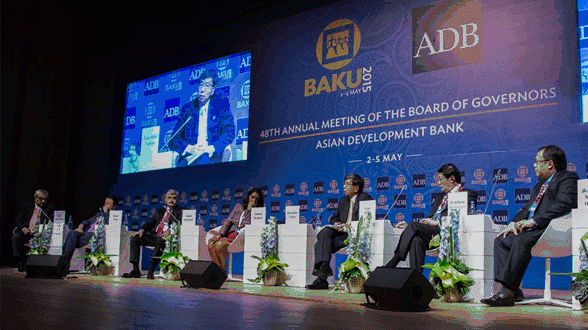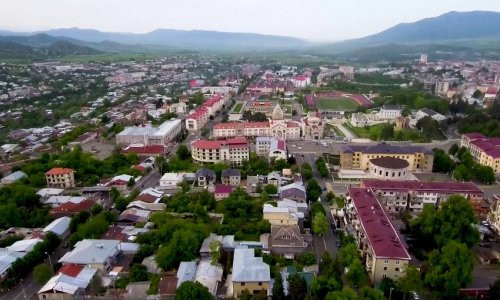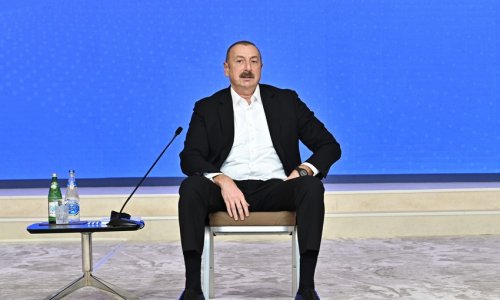As developing Asia seeks inclusive and sustainable economic growth, countries are adapting their growth models to take advantage of new opportunities, to address emerging challenges and to realize the full potential of their economies, according to participants at a high-level Asian Development Bank (ADB) seminar.
"Despite the global financial crisis, developing Asia continues to be an important source of growth in the global economy,” ADB President Takehiko Nakao said at the Governors’ Seminar during ADB’s 48th Annual Meeting in Baku, Azerbaijan. "However, the favorable conditions underpinning this growth may not prevail in coming years, so it’s important that countries prioritize reforms that will best position their economies for continuing expansion.”
Mr. Nakao took part in the seminar—entitled "Rethinking Growth Potential and Growth Models”—alongside the finance ministers of Azerbaijan (Samir Sharifov), People’s Republic of China (PRC) (Lou Jiwei), Indonesia (Bambang Brodjonegoro), and Japan (Taro Aso). Also attending were Rajiv Mehrishi, Secretary of the Department of Economic Affairs at India’s Ministry of Finance, and Beatrice Maser Mallor, Delegate of the Swiss Government for Trade Agreements, State Secretariat for Economic Affairs.
As a "new normal” of slower global and regional growth appears to take hold, many countries in the region are reconsidering their growth strategies and carrying out structural reforms to enhance their economic potential.
Minister Lou said the PRC can maintain stable growth rates even under the new normal. The government is shifting focus from "quantity” to "quality” of growth, and a greater reliance on domestic private consumption. Higher quality growth in the PRC could offset rising labor costs, currency appreciation, and weaker export growth. Across the region, he noted, countries still needed to improve "infrastructure, interconnectivity, and integration.” ADB can play a crucial role in promoting economic integration.
Minister Brodjonegoro said Indonesia is addressing constraints on industrial upgrading and growth by boosting infrastructure investment and human capital development. India is moving toward a model where manufacturing plays a bigger role in generating jobs and higher incomes, noted Secretary Mehrishi.
Azerbaijan, which has tripled its gross domestic product in less than two decades, needs to rethink its growth model. Minister Sharifov said resource-rich economies need to diversify into other sectors—such as tourism and information technology—to counter their exposure to commodity price shocks.
With such diverse circumstances in the region, different keys are needed to unlock growth. Panelists highlighted several areas needing attention. Reforming labor and land markets and rationalizing subsidies can remove inefficiencies. Considerable investment is needed to meet the region’s infrastructure requirements. Ambassador Maser Mallor said that innovation resulted in more and better jobs, leading to a reduction of poverty.
Minister Aso emphasized that sustained economic growth under the new normal required a transition from labor intensive to knowledge intensive manufacturing. For that to happen it is crucial that governments foster research and development, innovation, and new market opportunities, as well as implement necessary structural reforms.
Enhanced regional cooperation can boost intraregional trade and investment, thereby multiplying the dividends gained from domestic policies. Countries that are already firmly established in global value chains face the challenge of producing more sophisticated goods and services to become high income, panelists said.
ADB, based in Manila, is dedicated to reducing poverty in Asia and the Pacific through inclusive economic growth, environmentally sustainable growth, and regional integration. Established in 1966, it is owned by 67 members – 48 from the region. In 2014, ADB assistance totaled $22.9 billion, including cofinancing of $9.2 billion.
www.ann.az
Follow us !











